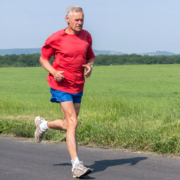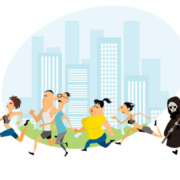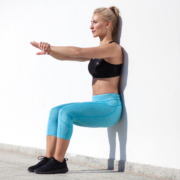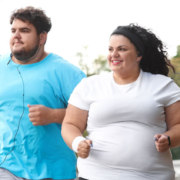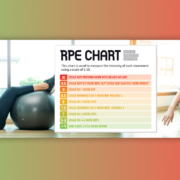HIIT Will Get You Fit
An Insider emailed me a link to a press release about high-intensity interval training, or HIIT for short. I’ve always used interval training, when I was a serious runner, and now as a way to increase my fitness level faster. That’s why I was a little surprised that a study suggested that you have to do intervals that are at least a minute long and shouldn’t rest more than two minutes. I checked out what I could find.
The research was presented at a conference and as much as I tried, I couldn’t get the abstract. Fortunately, the press release contained just enough information to figure out what was what. The researchers recruited 26 previously sedentary subjects and put them on a HIIT program. They either took part in 60-second intervals of high intensity with 60 seconds rest or intervals that lasted 30 seconds with 120 seconds rest. While both groups saw similar changes in body composition and arterial stiffness, the 60/60 groups saw bigger improvements in max VO2, a measure of aerobic fitness. In fact, the release included comments from the lead author that the subjects didn’t improve their fitness level at all.
That didn’t make any sense to me. If the intensity was high enough, 30 seconds of all-out effort would need two minutes to recover. I found the problem. One of the purposes of the study was to use exercises people could do at home, so they used calisthenics: push-ups, squats, sit-ups and exercises such as that. That’s admirable, but it made the headline and her comments misleading—extremely misleading.
Using sedentary subjects means they had to overcome localized muscle fatigue. The localized muscle pain may get the heart rate to increase but it’s limited by muscle stamina, especially in sedentary individuals, until they could actually do enough push-ups, etc., to challenge their cardiovascular system. A six-week study is not long enough for them to really master the movements and do them fast enough in order to get a good aerobic training effect.
The Bottom Line
HIIT can be effective if done properly; running and cycling are still the best options to do that. You can reach aerobic exhaustion in 30 seconds if the intensity is high enough, and if you do, you’ll need every one of those two minutes to recover before the next interval begins. You must make sure your cardiovascular system is ready for it, so get your doctor’s clearance before you attempt it.
What are you prepared to do today?


